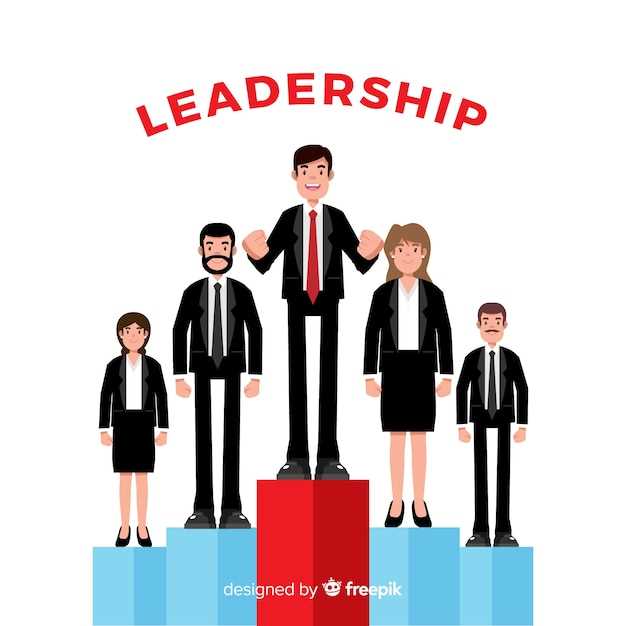Leading Your Business to Success – Key Leadership Lessons

Leading a team towards triumph in the competitive business arena requires a unique set of skills, strategies, and qualities that distinguish a prosperous leader from the rest. It entails navigating through challenges, inspiring innovation, and fostering a culture of growth and resilience.
In this segment of exploration and insight, we delve into the intricate world of effective leadership, where decisiveness, adaptability, and vision play pivotal roles in shaping the trajectory of organizations. Embark on a journey of self-discovery and refinement as we uncover the secrets and principles behind exceptional leadership that propels companies towards unprecedented heights.
Developing Your Leadership Style
Creating and honing your unique approach to guiding and influencing others is a crucial aspect of becoming an effective leader. In order to truly excel in a leadership role, it is essential to continuously evolve and refine your leadership style to suit the ever-changing needs of your team and organization.
Understanding Your Strengths and Weaknesses
One key step in developing your leadership style is to gain a deep understanding of your own strengths and weaknesses. By acknowledging where you excel and where you may need improvement, you can tailor your approach to leverage your strengths and mitigate your weaknesses. This self-awareness is an important foundation for building a successful leadership style.
Adapting to Different Situations
Effective leaders are able to adapt their style to suit varying circumstances and challenges. Being flexible and open to new ideas allows you to respond to unexpected changes and lead your team through adversity. By staying agile and willing to experiment with different approaches, you can develop a leadership style that is versatile and well-suited to any situation.
Exploring different leadership approaches
Delving into various methods of guiding a team towards achieving objectives is crucial for any aspiring entrepreneur or manager. By examining different techniques and strategies utilized by successful leaders, you can gain valuable insights into how to effectively motivate and inspire your team members.
1. Diverse Leadership Styles

- Autocratic Leadership: A style where the leader makes decisions without input from team members.
- Democratic Leadership: Involves group collaboration and shared decision-making among team members.
- Transformational Leadership: Inspires and motivates team members to achieve high levels of performance.
2. Situational Leadership Models

- Hersey and Blanchard’s Situational Leadership Theory: Adjusting leadership style based on the readiness and ability of team members.
- Vroom and Yetton’s Normative Decision Model: Determining the level of participation in decision-making based on the situation.
- Fiedler Contingency Model: Matching leadership style to the level of control and influence the leader has in a given situation.
Effective Communication in Leadership

Communication plays a crucial role in the art of guiding a team towards achievement and prosperity. The ability to convey ideas, provide feedback, and listen actively are essential components of effective leadership.
Clear and concise communication ensures that team members understand tasks and objectives clearly, reducing the likelihood of misunderstandings or errors. Active listening allows leaders to empathize with their team members, build trust, and address any concerns or difficulties promptly.
Additionally, open and transparent communication fosters a culture of collaboration and innovation within the organization. Leaders who communicate openly encourage feedback, ideas, and continuous improvement, leading to enhanced team performance and overall success.
Improving team collaboration and productivity
In this section, we will explore strategies for enhancing the efficiency and effectiveness of team collaboration in order to boost overall productivity. By fostering a collaborative and communicative work environment, teams can better align their goals, streamline their processes, and achieve greater success.
| Encourage open communication: Encouraging team members to openly share ideas, concerns, and feedback fosters a sense of trust and transparency within the team. This open communication helps to resolve conflicts, align team goals, and enhance overall collaboration. |
| Cultivate a culture of collaboration: Creating a work culture that values collaboration and teamwork encourages employees to work together towards common goals. By recognizing and rewarding collaborative efforts, teams are motivated to consistently collaborate and support one another. |
| Utilize technology tools: Leveraging technology tools such as project management software, communication platforms, and collaboration apps can facilitate seamless collaboration among team members. These tools help streamline workflows, improve communication, and enhance productivity. |
| Provide ongoing training and development: Investing in training and development programs that focus on teamwork, communication, and collaboration skills can empower team members to work more effectively together. By continuously enhancing these skills, teams can achieve higher levels of productivity and success. |
By implementing these strategies and fostering a collaborative work environment, teams can enhance their productivity and achieve greater success in reaching their collective goals. Improving team collaboration is essential for driving innovation, boosting efficiency, and ultimately achieving long-term success.
Strategies for Motivating Your Team
Effective methods for inspiring and encouraging your team members to perform at their best can lead to increased productivity, improved morale, and better overall results. In this section, we will explore various approaches and techniques that can help you create a motivating work environment.
Set Clear Goals: Establishing clear and achievable goals for your team members can provide them with a sense of direction and purpose. When goals are specific, measurable, and time-bound, employees are more likely to stay motivated and focused on achieving them.
Recognize and Reward: Acknowledging the hard work and accomplishments of your team members through recognition and rewards fosters a culture of appreciation and motivation. Whether it’s a simple thank you, a public shoutout, or a tangible reward, showing appreciation can go a long way in boosting morale.
Encourage Communication: Open and transparent communication channels can help team members feel heard, valued, and engaged. Encouraging feedback, ideas, and suggestions creates a sense of belonging and ownership within the team, leading to increased motivation.
Provide Growth Opportunities: Offering opportunities for professional development, training, and advancement can motivate team members to continuously improve and expand their skills. Investing in their growth not only benefits the individual but also enhances the overall performance of the team.
Foster a Positive Work Environment: Creating a supportive and inclusive work environment where team members feel safe, respected, and appreciated can significantly impact their motivation levels. Encouraging collaboration, teamwork, and a healthy work-life balance can boost morale and productivity.
